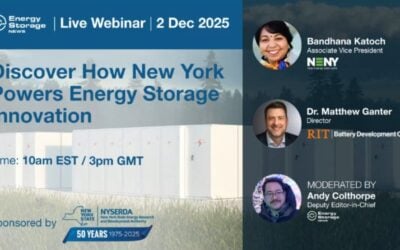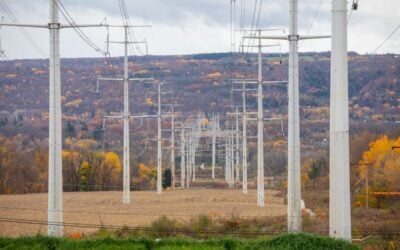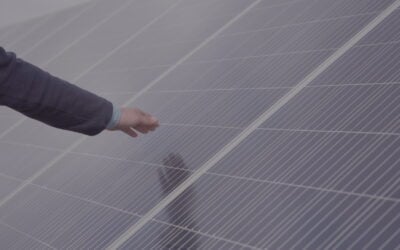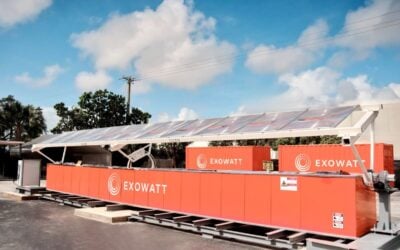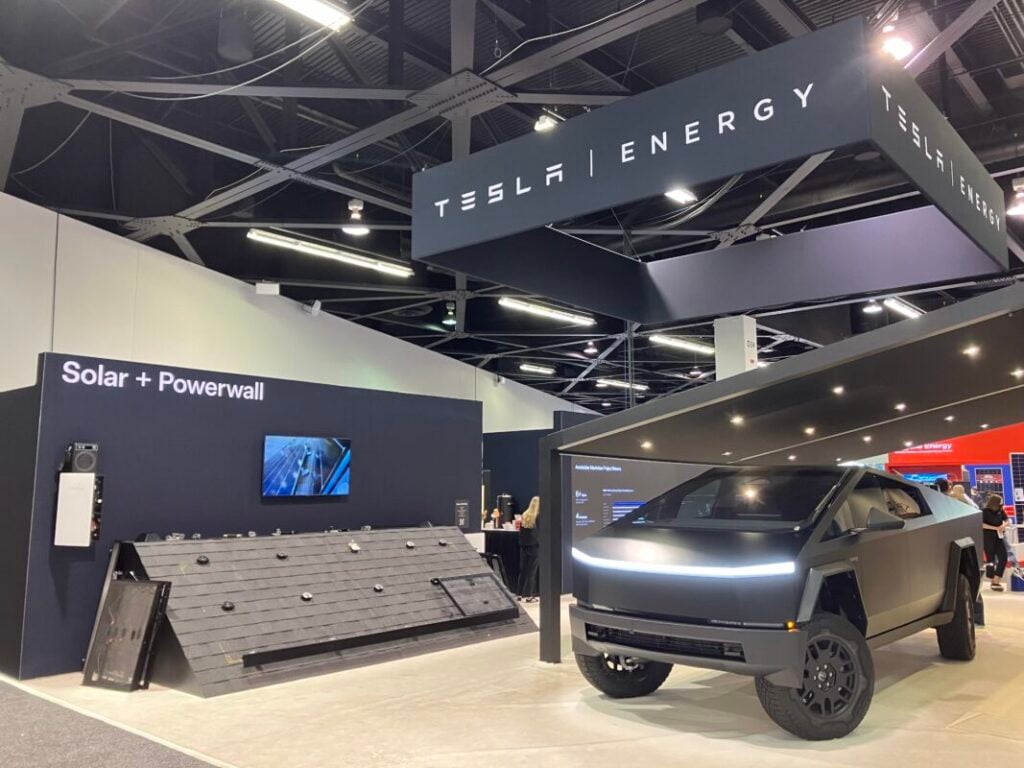
Tesla’s energy storage division saw its highest quarterly gross profits in Q2 2025, as the company’s automotive business continued to see dampened demand.
The US tech company reported its most recent financials last week (23 July). Its total electric vehicle (EV) deliveries had declined 13% year-over-year, from 444,000 in Q2 2024 to 384,000 in the quarter just gone.
Meanwhile, at 9.6GWh for the quarter, energy storage deployments represented a 2% growth from 9.4GWh in Q2 last year. However, it was an 8% decline from the 10.4GWh reported by Tesla for Q1 this year and a 13% drop from Q4 2025’s company record-breaking 11GWh deployed.
Revenues for both the automotive and energy divisions were down year-on-year: automotive revenues of US$16.7 billion reflected a 16% decrease from just under US$20 billion in Q2 2024, and energy generation and storage revenues of US$2.8 billion, a 7.5% fall from just over US$3 billion in the same period last year.
Try Premium for just $1
- Full premium access for the first month at only $1
- Converts to an annual rate after 30 days unless cancelled
- Cancel anytime during the trial period
Premium Benefits
- Expert industry analysis and interviews
- Digital access to PV Tech Power journal
- Exclusive event discounts
Or get the full Premium subscription right away
Or continue reading this article for free
However, as the company also said in the previous quarter’s results, the energy storage business is more profitable in percentage terms.
The cost of revenues for automotive stood at US$13.8 billion, for a 17% gross profit margin, while cost of revenues in the energy division, at US$1.9 billion, equated to US$846 million, or 30%, gross profit.
While much of CEO Elon Musk’s prepared remarks in an earnings call focused on the company’s “next phase,” of robotaxis, artificial intelligence (AI), humanoid robots and a new diner Tesla has opened in Los Angeles, he did comment that the energy division was “growing really well, despite headwinds from tariffs and supply chain challenges.”
Tesla does not break out deployment figures between its utility-scale Megapack and residential Powerwall battery energy storage system (BESS) solutions, but Musk did say that Megapack “is expanding capacity quickly,” while Powerwall just enjoyed a record quarter for deployments.
CFO Vaibhav Taneja said that there had been sequential improvements in the energy generation and storage business’s margins, with higher profits realised from fewer deployments “primarily due to the ramp of power deployments at higher margins,” Taneja said, leading to Tesla’s highest gross profit for the business segment to date.
In its Q1 2025 earnings call, Taneja had said that the energy storage division, reliant on Chinese lithium iron phosphate (LFP) battery supply, would be more adversely affected by US import tariffs than its EV business, which uses battery cells made in-house and with partner Panasonic in the US.
Since then, however, the passing of the HR1 budget reconciliation bill removed the US$7,500 Inflation Reduction Act (IRA) rebate for electric car purchases by the end of this quarter.
Taneja said Tesla had limited supplies of cars in the US and, as a result of the “abrupt change,” may not be able to guarantee delivery orders in the latter part of August and beyond.
The bill also pared back emissions standards, “reducing the penalty to zero” for climate pollution, which would lower revenue from Tesla sales of regulatory credits to other automotive OEMs.
US manufacturing investments to mitigate risks
In another abrupt change, the legislation formerly known as the ‘One Big, Beautiful Bill Act’ before its signing into law also cuts the residential investment tax credit (ITC) applicable to clean energy equipment, including solar PV and batteries, at the end of this year (although not for leased equipment).
The ITC remains in place for utility-scale energy storage projects on the original ITC timeline. This is likely to help the industry retain momentum, according to BloombergNEF (BNEF) analyst Isshu Kikuma, but the bill also introduced new rules on foreign entity of concern (FEOC) and prohibited foreign entities (PFEs).
These apply to material assistance from China and mean that projects looking to use more than a 60% threshold of Chinese imported materials, equipment or investment must begin construction on an accelerated timeline or lose ITC eligibility altogether.
With battery cells comprising at least half the capital cost of a typical large-scale BESS project, the imperative is there for a US supply chain, even if the supply chain itself does not exist outside a handful of manufacturers.
Perhaps the most notable of these is South Korea’s LG Energy Solution (LG ES), which, having recently opened production lines retooled from EV nickel manganese cobalt (NMC) to LFP batteries for ESS applications in Michigan, said in its latest financial results that it now intends to nearly double ESS cell production capacity in the US to more than 30GWh by the end of 2026.
Tesla VP of energy and charging Mike Snyder said the company continues to “invest heavily in US manufacturing to mitigate policy and tariff impacts.”
The company’s first US domestic LFP cell factory will be online by the end of this year, Snyder said. The plant, close to the original Tesla gigafactory in Nevada, was revealed to be close to completion in a company video posted to Musk’s social media site X in late June.
Snyder said Tesla also intends to start work on its third Megapack assembly plant, which is near Houston, Texas, in 2026. The company currently operates two Megapack factories, one in Lathrop, California, and the other in Shanghai, China, each ramping to 40GWh annual production capacity.
‘Shifts in demand and profitability’ expected through tariff and bill impacts
The HR1 bill also saw the early removal of ITCs for utility-scale solar PV projects. Asked by an analyst on the call what sort of impact that might have on Tesla’s energy business, Snyder said the pipeline is “quite diversified across customers and market segments.”
“So, we aren’t heavily weighted in Megapack projects that are paired with solar,” Snyder said, noting that Tesla is seeing growing emphasis on BESS projects “deployed to help the grid.”
“Additionally, although the recent bill was not favourable towards solar, we believe solar projects will still get built because the energy is necessary. The projects are well developed and they’re ready for execution,” Snyder said.
“And there’s really no alternatives in the near term, given gas turbine lead times and pricing. We also continue to see growth in the data centre segment and in standalone storage projects, providing capacity to the grid in several markets across the US.”
With drivers like the immense growth in electricity demand from AI data centres, Tesla customers have quickly started realising that energy storage is the fastest way to “scale up energy,” Taneja claimed.
“And despite this business having the largest impact from tariffs, we are seeing customers willing to accept some of the tariff impacts.”
The CFO warned, however, that both the bill and tariffs present challenges for the energy storage business and said that while Tesla is trying to manage the situation as best it can, it expects “shifts in demand and profitability.”
Conference call transcript by Seeking Alpha.

